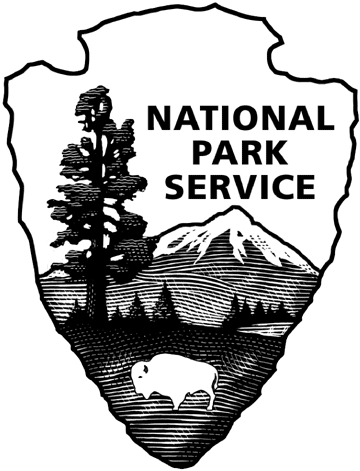Formative Evaluation of Interpretive Design and Restoration for the Carter G. Woodson Home using Focus Groups
DOI Generic Clearance for the Collection of Qualitative Feedback on Agency Service Delivery
FT-88 Carter Woodson Focus Group script
Formative Evaluation of Interpretive Design and Restoration for the Carter G. Woodson Home using Focus Groups
OMB: 1090-0011
 OMB
Number: 1090-0011
OMB
Number: 1090-0011
Expires 10/31/2021
Carter G. Woodson Home National Historic Site
Focus Group Script and Questions
Instructions and script:
The facilitator will greet each focus group, welcome them to the meeting room, and read the following:
First, I’d like to welcome you and thank you for volunteering to be here today. My name is [insert facilitator’s name] and I’m part of the exhibit design team that is currently working on new exhibits at the Carter G. Woodson Home. We’re in the early phases of the project and are talking with a few different groups of people to learn more about what you would like to see at a historic site like the Carter G. Woodson Home.
As [INSERT one of the following as appropriate each focus group: (1) professionals who work at DC’s cultural sites, (2) educators with experience in effective teaching methods, (3) local community members, or (4) professionals who have direct experience with cultural tourism] we truly value your input. Your responses will be put into a report that will help guide the design and development of the exhibits.
Before we start, I’d like to let you know that we should be here for about an hour and we will be discussing topics about your experiences and impressions of different features in museums or historic homes. Now, can I get a show of hands who here has heard of Dr. Woodson?
To provide a little background, Carter G. Woodson is known as the “father of black history.” He established the study of African American history and life, and also pioneered the celebration of “Negro History Week.” Today we know it as Black History Month. He lived in and worked from a townhouse in the Shaw neighborhood of D.C. His historic home is the centerpiece of the project, and we are also developing exhibits that explore his legacy and impact.
We’ll begin with some questions about what you think makes a good museum and what is important to include. We have a voting activity and also a few questions for this group specifically. The conversation should take about an hour. My colleague [insert record keeper name] will be typing notes, but we are not recording any voices.
If you have any questions about the survey or report, we can give you contact information for the National Park Service. [Facilitator will make available a written PRA statement and contact information for Ann Honious, Deputy Superintendent National Capital Parks-East, 202-690-5127, [email protected].]
PAPERWORK REDUCTION and PRIVACY ACT STATEMENT: The Paperwork Reduction Act requires us to tell you why we are collecting this information, how we will use it, and whether or not you have to respond. We are authorized by the National Park Service Protection Interpretation and research in System (54 USC §100702) to collect this information. The purpose of this focus group is to identify architectural and exhibition techniques that will increase awareness of the impact and modern relevance of Carter G. Woodson’s life and work and make the Home a responsive and successful resource for the community. Your responses to this collection are completely voluntary. You can end the process at any time and will not be penalized in any way for choosing to do so. All paper versions of the information collected will be destroyed at the end of the collection period and no personal identifiable records will be maintained or stored for any purposes. Data collected will only be reported in aggregates and no individually identifiable responses will be reported. A Federal agency may not conduct or sponsor, and you are not required to respond to, a collection of information unless it displays a currently valid OMB Control Number (1090-0011). We estimate that it will take about 1 hour to complete this questionnaire. You may send comments concerning any aspect of this information collection to: Phadrea Ponds, NPS Information Collection Coordinator, 1201 Oakridge Dr., Fort Collins, CO 80525, [email protected] (email).
Focus
Group set up The
focus group participants will be grouped together in sessions by the
community, profession or field in which they have experience. These
categories have been selected by the project team in order to gather
responses from people with a broad but relevant range of backgrounds
and levels of knowledge concerning sites of this type. Session will
include the following respondent groups: Educators:
including teaching professionals with experience in methods to
reach young learners. This group is also important to the survey
for its input on the operations of group tours and visiting the
site with large numbers of students. Tour
group vendors and guides:
We are soliciting the opinions of these professionals to gain an
understanding of what makes cultural sites successful and popular
parts of their itineraries and how a site might best prepare to
accommodate large groups of scheduled visitors. Multigenerational
community members:
We’d like to hear from those in the local community on their
opinions of what could make the Home a valuable asset to
Washingtonians. We also hope to elicit responses on any community
resources who might have known Dr. Woodson or lived in his
neighborhood themselves. We are inviting individuals from all age
groups, with special emphasis on youth, to participate. Museum
and historic site professionals:
This group is drawn from non-National Park Service staff to provide
the study with the benefit of comparative experiences. Each
respondent group will have no more than 12 individuals. Each session
will last no more than one hour with a half-hour break before the
start of the next session. A facilitator will guide the discussion
to ensure that each participant has a chance to respond, while a
record keeper will type notes and manage time. The study is
primarily conversation-based, with a voting exercise consisting of
two questions that the participants will be asked to rank.
The
first segment of each session asks the same questions of each
respondent group (experience, knowledge and perception). The second
session will consist of questions related to experience, knowledge
and perception of the specific respondent group.
The
notes and results from the voting activities will be used with the
on-site questionnaires, to draft a narrative report on the outcomes
of this study.
General Museum Experience Questions (All Respondent Groups)
Please think about a very good experience you’ve had in a museum, visitor center or similar venue. What made the experience a good one? Why?
What do you think museums, visitor centers or similar venues most often “get wrong” in exhibits?
What could a museum, visitor center or similar venue do to impress you? Why?
Do you prefer exhibits that are organized chronologically (i.e., stories are told in the order they happened), or exhibits that group areas by themes (i.e., information is grouped by ideas)?
What do you expect from a historic home museum experience?
Have you ever used your smartphone or tablet in a museum as part of a tour or other experience?
If yes, did you enjoy using your smartphone or tablet? Why or why not?
When were you last surprised—good or bad—by a museum, visitor center or similar venue? Please describe the experience.
Voting Activity
The questions in this section will be used to understand the respondent’s perception related to elements of museum design and function. The facilitator will introduce a simple voting activity to gather responses for Question 8 and 9. A poster board will be used to display a grid with prompt statements and a scale to rate the responses.
Participants will be asked to rate each prompt statement by placing a sticker on the scale of 1 to 5. When complete, the total value for each column will be calculated by adding up the value of its stickers, giving each prompt statement a relative score. The group will briefly review and discuss responses and a photograph of the resulting voting board will be taken to provide a record.
8. On a scale of 1 to 5, please indicate how much you agree with each statement.
1: Strongly disagree |
2: Disagree |
3: Neural |
4: Agree |
5: Strongly agree |
PROMPTS
|
||||
9. On a scale of 1 to 5, please rate the importance of each element in creating a good museum experience:
1: Very unimportant |
2: Unimportant |
3: Neural |
4: Important |
5: Very important |
PROMPTS
|
||||
Carter G. Woodson
Why would you visit the Carter G. Woodson Home?
What are the top three things you’d like to learn about Dr. Woodson?
Can you describe some ways in which Dr. Woodson impacted your life?
How would you characterize Dr. Woodson’s relevance to today?
Questions for specific sessions
The questions that follow will be used during the second segment of the focus group sessions. Each respondent group will have a specific set of questions that will be relevant to their community or professional experiences (e.g., educators, tour group vendors/guides, community members, or museum/historic site professionals).
EDUCATORS SESSION ONLY
Please describe your ideal class visit to the Carter G. Woodson Home.
What are the most difficult concepts to convey to your students?
What are your strategies for reaching them?
What kind of advance preparation materials could make your visit more effective or engaging?
How do you think you would use material learned at the Carter G. Woodson Home back in your classroom?
TOUR GUIDE/VENDOR SESSION ONLY
Please describe your ideal tour visit to the Woodson Home.
Based on your customers’ reactions and comments, in your opinion, what is the most popular or effective historic site in Washington, DC?
What did customers have to say about it?
What could the Carter G. Woodson Home, as a site, do to make your tours efficient and engaging?
What kind of advance preparation materials could make your client’s visits more effective or engaging?
COMMUNITY SESSION ONLY
What would you like to see in the museum exhibit?
Have you ever been to a museum or exhibit that felt authentic or “told your story” well? If so, what was it like?
What would you suggest that the exhibit developers do to reach community members who might have known or remember Dr. Woodson?
What is the biggest misconception about Dr. Woodson or his era that the exhibit can help fix?
When telling a biographical story (the history of one person), what is the most important thing to remember?
MUSEUM AND HISTORIC SITE PROFESSIONALS ONLY
Other than your own site, what is your favorite historic site in Washington, DC? Why?
What do you think is the biggest pitfall a historic site should avoid?
What are three things a historic site can do to be successful?
Please describe your most successful experience in reaching your audience. (i.e., a good exhibit, a popular website, a well-done media piece, or popular public program).
When telling a biographical story (the history of one person), what is the most important thing to remember?
| File Type | application/vnd.openxmlformats-officedocument.wordprocessingml.document |
| Author | Elizabeth Eubank |
| File Modified | 0000-00-00 |
| File Created | 2021-01-20 |
© 2026 OMB.report | Privacy Policy